Creating Habitat to Boost Your Bird Population
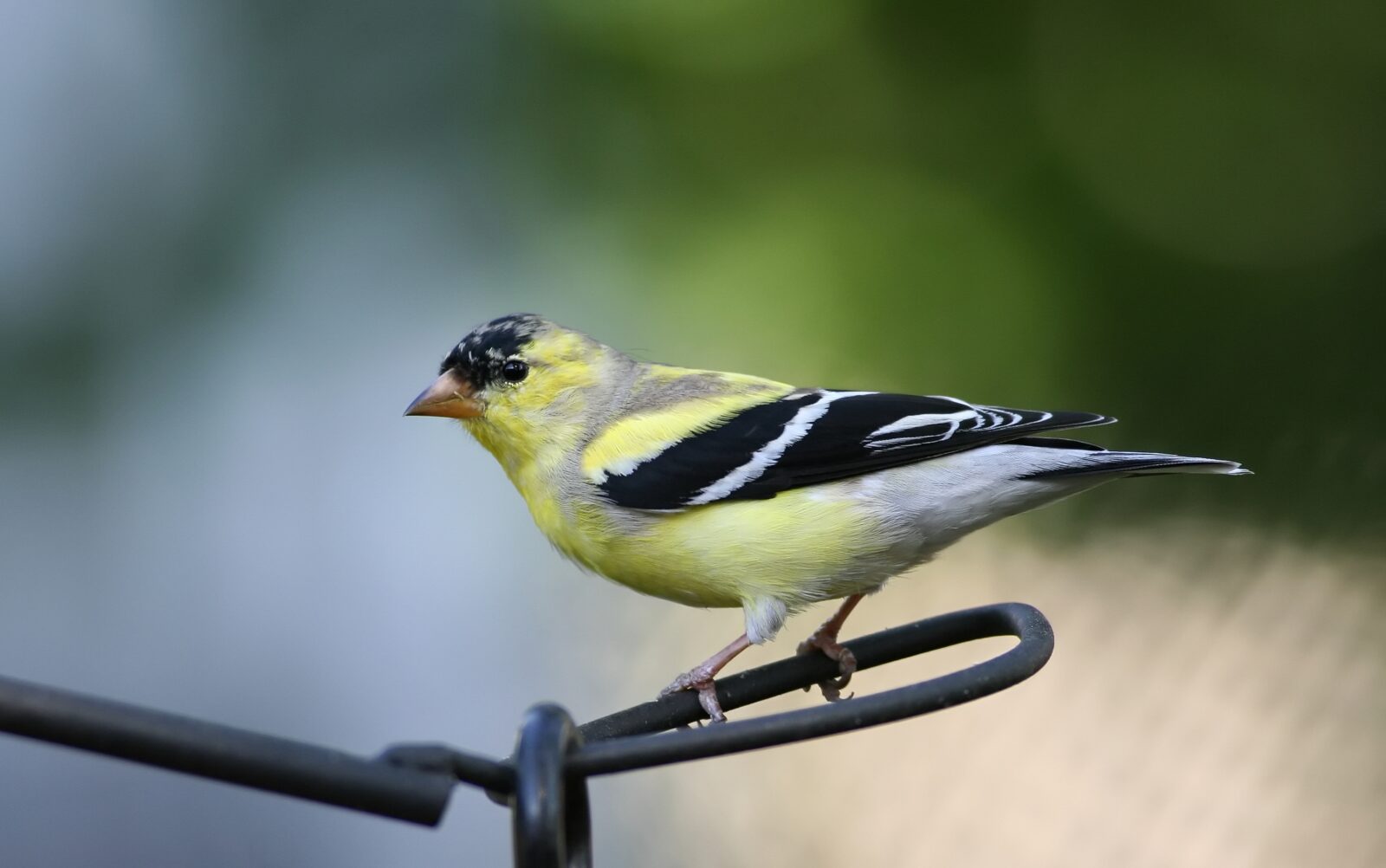
Written by Patrick Mulrooney | ASHS Certified Horticulturist, ISA Certified Arborist
Birds. These things are hilarious. Not only do they provide a good laugh, but they occupy acrucial role as apex predators on the top of the food chain, providing us clues about the health of the environment. This month we will focus on those special trees and shrubs that attract birds to our yard.
To attract birds to your yard, it is important to provide a diversity of plants, as the birds’ survival requirements change with the seasons. A Cornell study in 2019 found that birds’ numbers have dropped by 30 percent since 1970. In general, we want trees and shrubs that support insect populations, provide fruit throughout the year, and offer habitat and cover. First, we will discuss the shrubs and small trees, which are less expensive and easier to add to the borders of our yards than the large trees covered later.
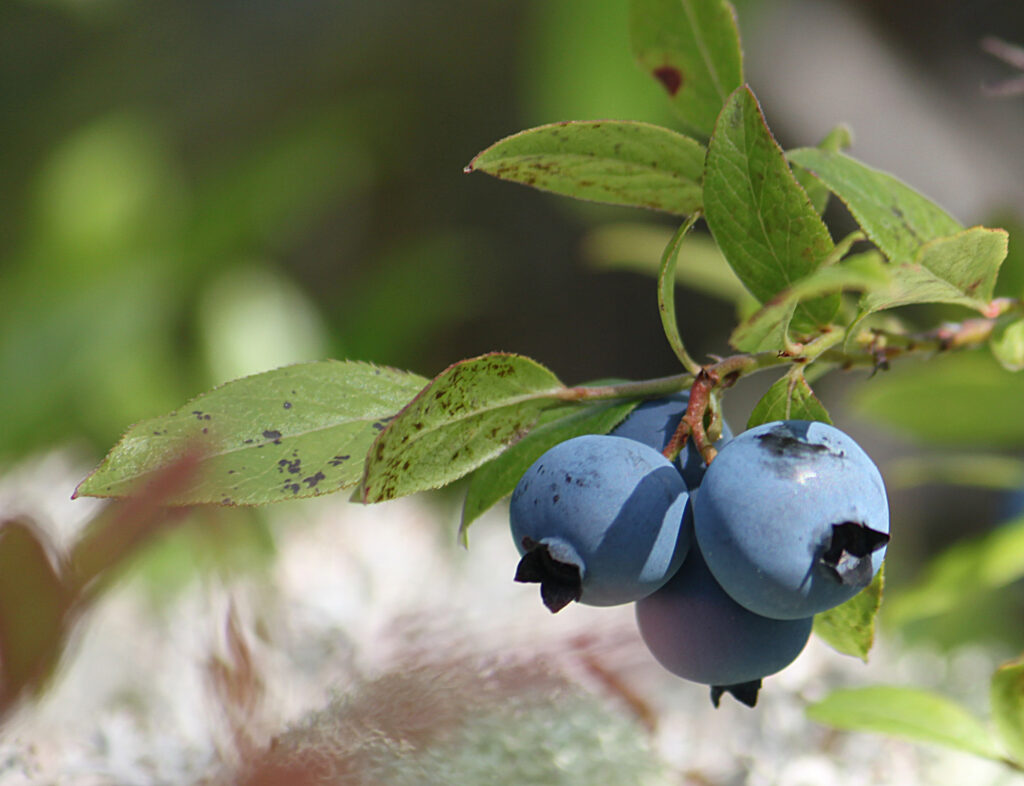
Wild Blueberries.
If you have full sun, there are few plants superior to the high bush blueberry (Vaccinium corymbosm). A mature plant can produce hundreds of berries for humans or animals and offers much more than its fruit; blueberry leaves and flowers feed dozens of native butterflies, moths, and insects. For a less sunny site, consider the elderberry (Sambucus nigra canadensis). Both plants are loved by the eastern bluebird and cedar waxwing, and are a favorite food source of the Baltimore oriole.
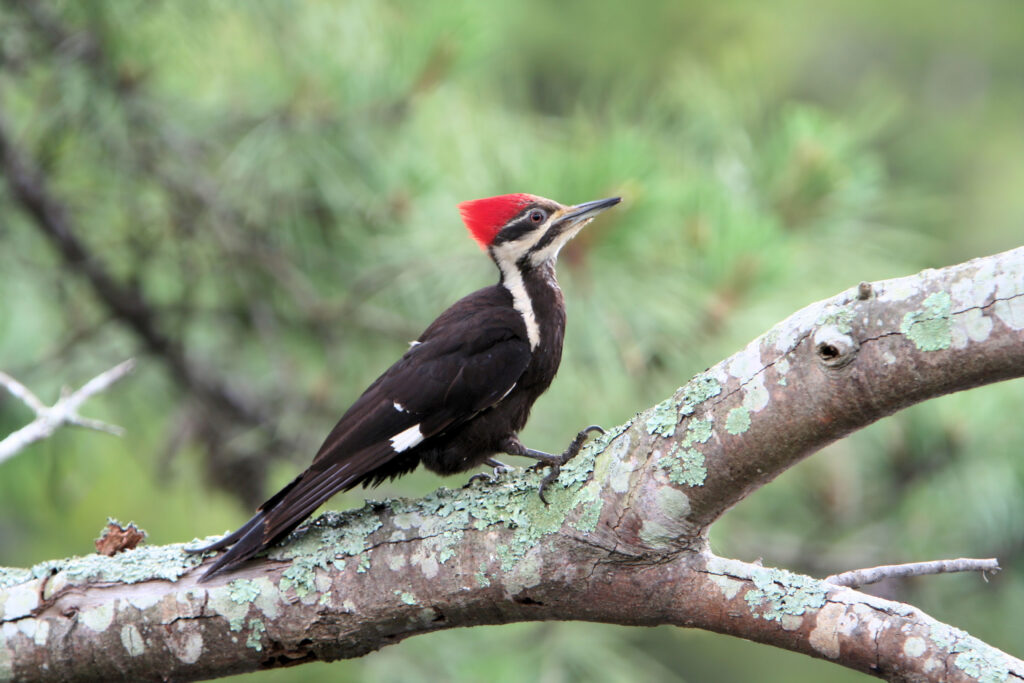
Pileated Woodpecker. Photo by Jeff Jones.
Moving out of the sun and back towards the edges of the landscape, we have an often-overlooked group of native shrubs: the viburnums. Three types worth checking out are the possum haw (V. prunifolium), arrowwood (V. dentatum) and black haw (V. nudum), which are powerhouses towildlife. Many birds feed on the fruit and still more insectivorous birds will visit the shrubs for the caterpillars that host on the leaves. Caterpillars are an important food source for baby birds preparing to leave the nest.
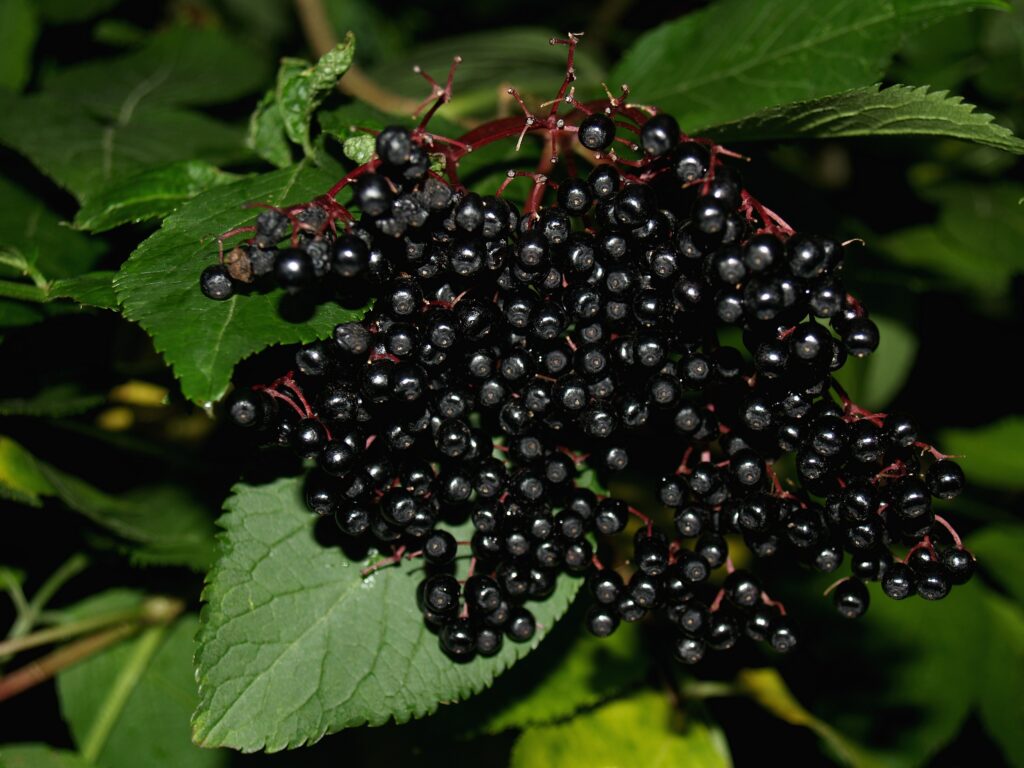
Elderberry. Photo by John Nyberg.
Spicebush (Lindera benzoin) is classified in the laurel family. Its bright red fruits, which ripen in September, are more than fifty percent fat, and are loved by migrating birds such as vireos, tanagers, robins, and thrushes. Another autumn-ripening shrub is beautyberry (Callicarpa americana) and isquite a stunner when its purple berry clusters mature. It will not be overlooked by robins, finches, thrushes, and towhees as the fruits persist on the bare branches for months. Both of these plants will be content in part shade.
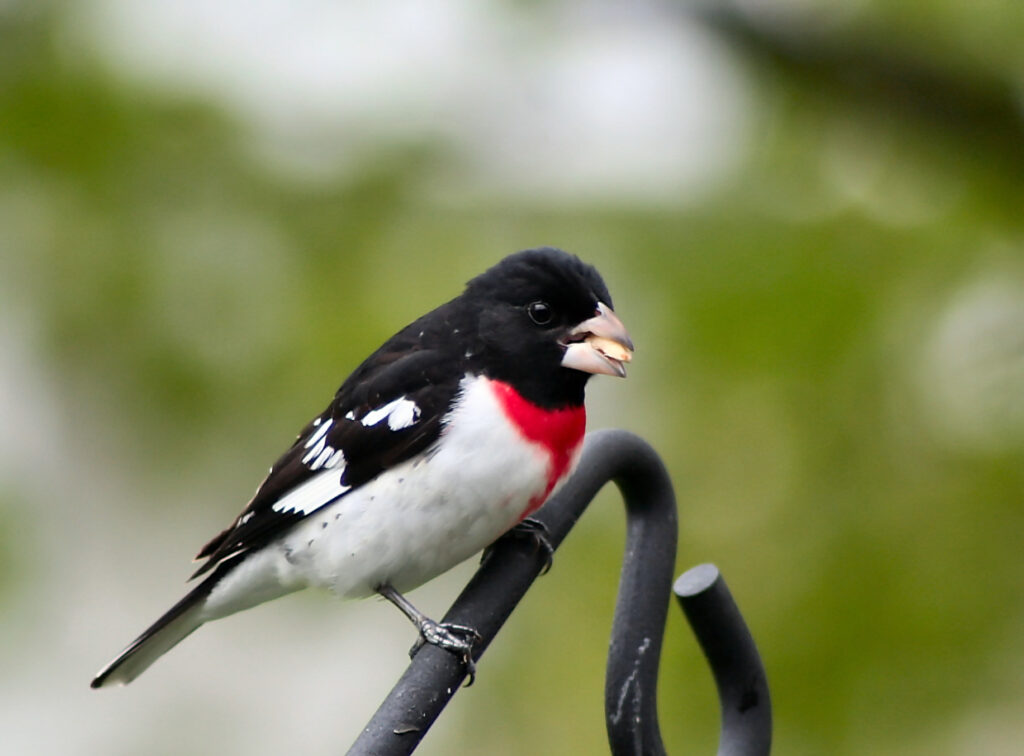
Rose Breasted Grosbeak.
The serviceberry is an elegant and statuesque small tree with an impressive display of small white flowers in the spring. It prefers sun to part shade and comes in single or multi-branched forms. Its nutrient-dense berries are edible for humans and are enjoyed by goldfinches, cardinals, Baltimore orioles and many others. There are a ton of varieties available. Check out ‘regent’ for a compact variety that stays under six feet tall or ‘autumn brilliance’ for impressive fall color.
While the shrubs and understory trees are beneficial, it is the full-sized trees that provide the true ecological foundation that birds need. The sheer scale of the resources is what sets them apart. The mighty white oak (Quercus alba) and American beech (Fagus grandiflora) host hundreds of species of caterpillars. Most fruit-eating birds supplement their diets with insects, so these two trees are always a good idea and will attract your insectivorous birds: vireos, warblers, and nuthatches.
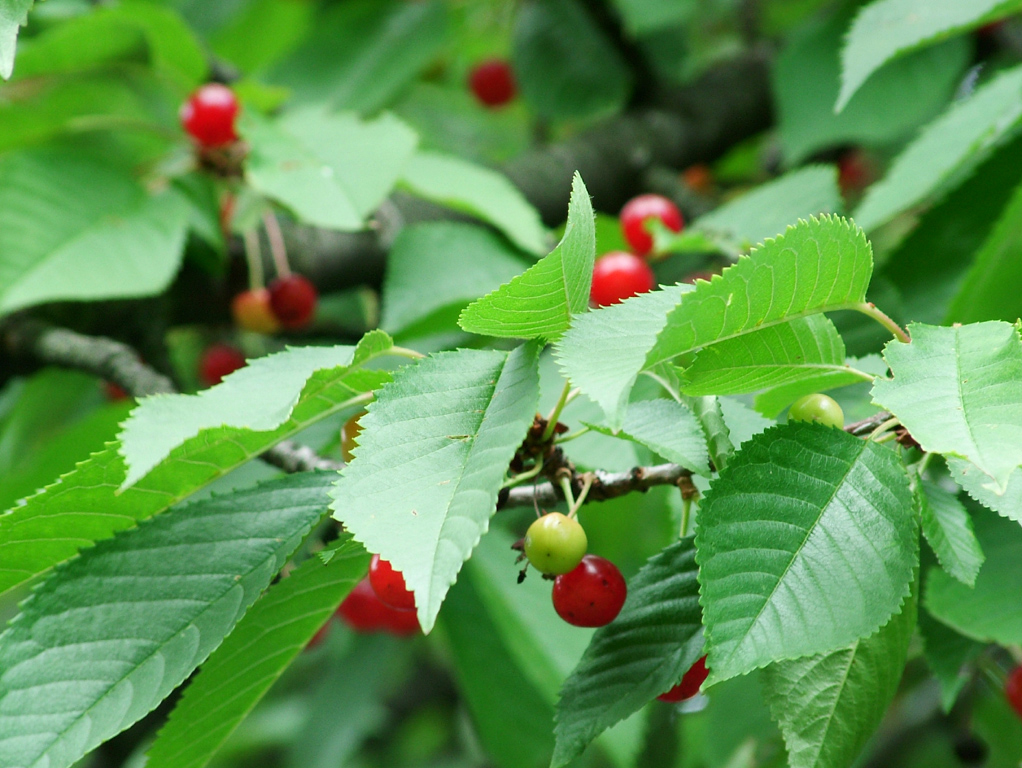
Wild Cherries. Photo by Joanna Plaszewska.
Wild cherries (Prunus sp.) will provide both caterpillars and a large quantity of fruit. The black cherry (Prunus serotina), choke cherry (Prunus virginiana) and pin cherry (Prunus pensylvanica) are all suitable species for this. Finally, no discussion is complete without mentioning the red mulberry, which is considered by many to be the favorite food of many birds. These trees will increase your chances of seeing the often-elusive scarlet tanager and rose-breasted grosbeak. And for those who wish to think outside the box, you might consider leaving up some dead and dying trees (where they are not endangering lives or structures, of course) as the insects found inside attract one of our most impressive native species, the pileated woodpecker.
While we have mentioned many food sources, we have overlooked the vital function of shelter in our discussion. For this, evergreen trees are most important. The American holly (Ilex opaca), Virginia juniper (Juniperus virginana) and eastern hemlock (Tsuga canadensis) are three native species that provide cover from predators and a place for nesting. These trees will help bring in the chickadees, thrashers and purple finches, among others. They are also vital as their fruit doesn’t ripen until the winter, when birds are really in need of food.
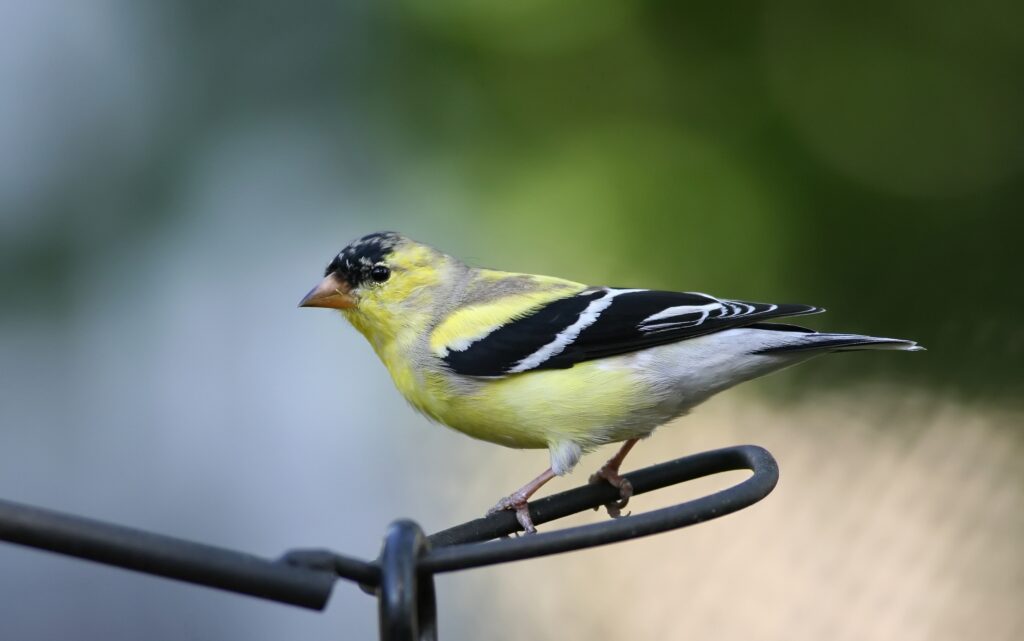
American Goldfinch. Photo by Maria Corcacas.
Providing habitat for birds can be a fun and rewarding hobby over the years. In my backyard, it is always exciting to see a new rose-breasted grosbeak or a Baltimore oriole and wonder if he is just passing through or a permanent resident. Currently, there are no incentives for creating habitat, but the National Wildlife Foundation does offer a certification for those interested.
As long as your property provides food, water, cover for shelter, places to raise young, and employs sustainable practices to keep the environment clean, you can earn this certified wildlife habitat certification by filling out a form describing your yard and paying a small fee. While the only benefit is a small plaque to post by your driveway, it is a good way to share your commitment to the environment with your neighborhood. Ahigh five from a neighbor is better than a pat on the back any day. ML
This article first appeared in the June 2020 issue of Middleburg Life.


